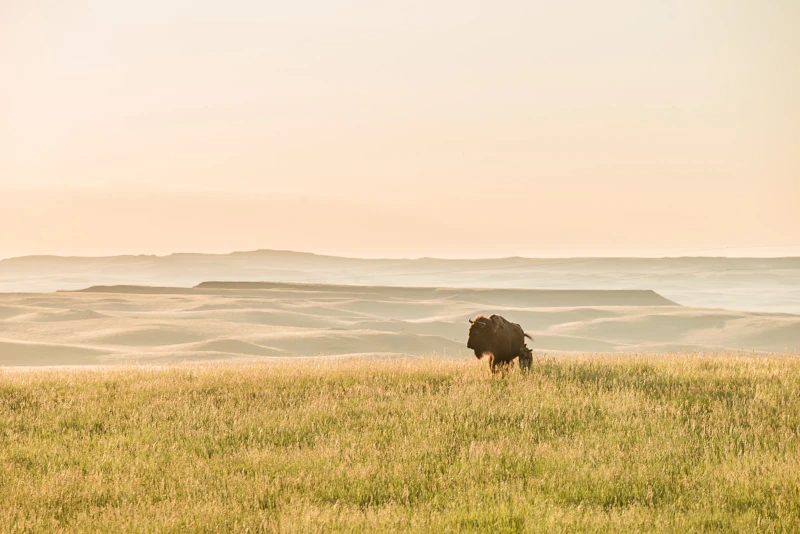
Buffalo Alive on the River Grandé
Once bound for extinction, the buffalo were rescued one calf at a time by ordinary people—whose families cared. We bring you the full narrative including the last great traditional hunts, a known buffalo jump, the people who saved calves and now all of us celebrating our amazing National Mammal in parks, ranches and tribal lands. We call this Buffalo Alive on the River Grandé because this is the one place in the world where buffalo have always lived and grazed.
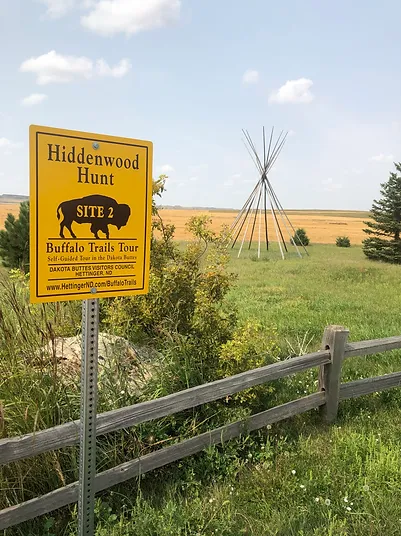
Hiddenwood Hunt Teepee Site
At the center of the Northern Plains is a rugged section of Badlands, buttes and fertile grasslands where cattle and sheep graze, and the deer and antelope still roam. This region – bordered by the towns of Hettinger, N.D. and Lemmon, Bison and Buffalo, S.D. – is where Lakota and Dakota people conducted the last hunts of the majestic, wild buffalo that once roamed the grasslands in great herds.
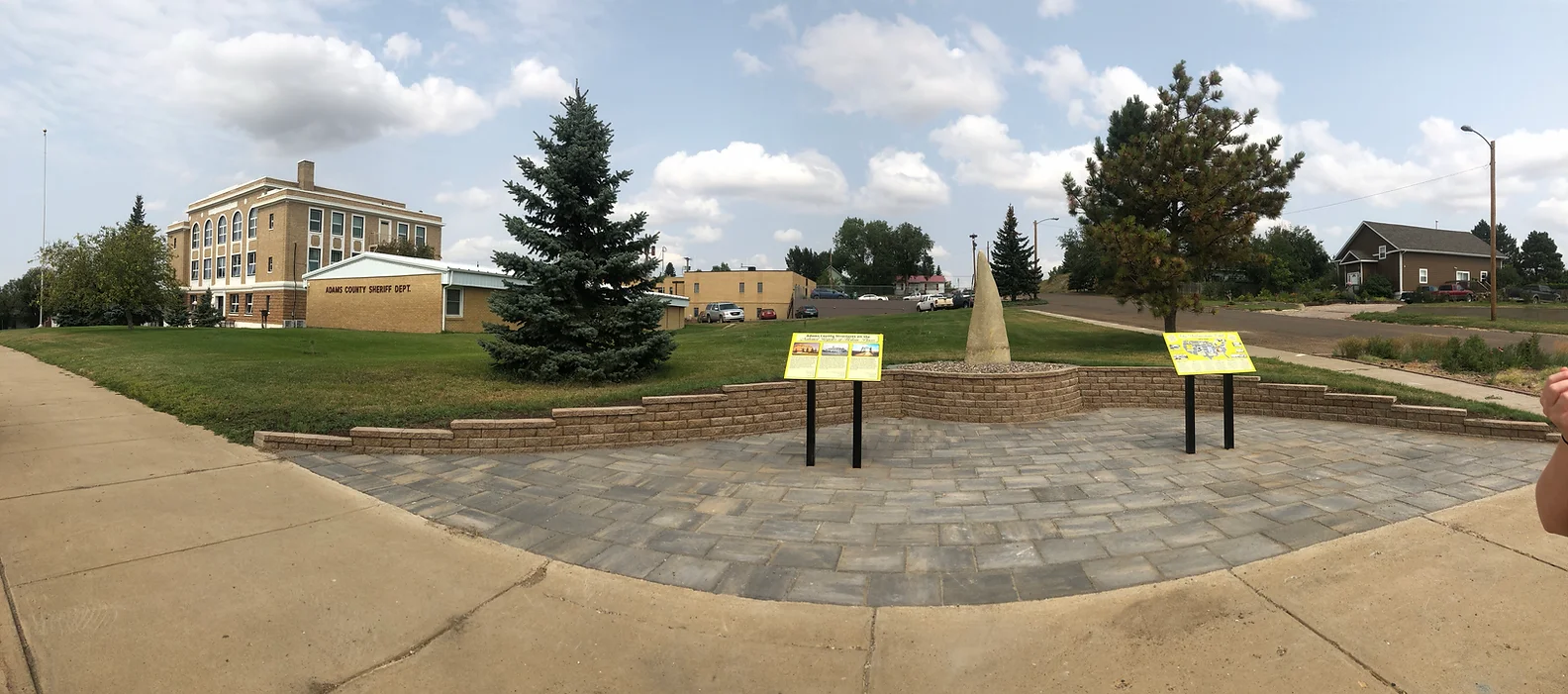
Yellowstone Trail Marker
The historic Yellowstone Trail cut right through Adams County, more specifically, Hettinger. The new Yellowstone Trail Marker is now located on the southeast corner of the Court House area. The Yellowstone Trail was extended from Chicago to Seattle and, by 1917, to Boston. Yellow and black signs were posted across the country. The Association promoted the opening of Yellowstone National Park to private auto travel. Click below to read more about the process of the Yellowstone Markers.
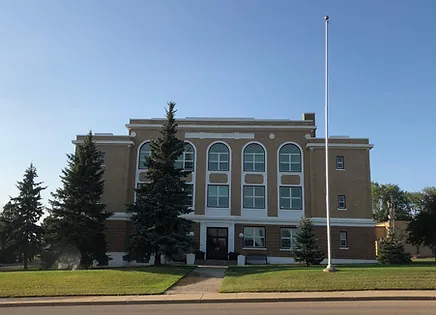
Adams County Courthouse
The courthouse built for Adams County in 1928 was designed by Ira Rush, a leading architect in North Dakota at the time and built by Fred R. Comb. Rush scaled back his original design to meet budget concerns but still infused Art Deco ideas into the older federal revival style. The earlier courthouse became the sheriff's residence until it was replaced in the 1960s. This courthouse was listed in the National Register of Historic Places in 1985 as part of a thematic nomination.
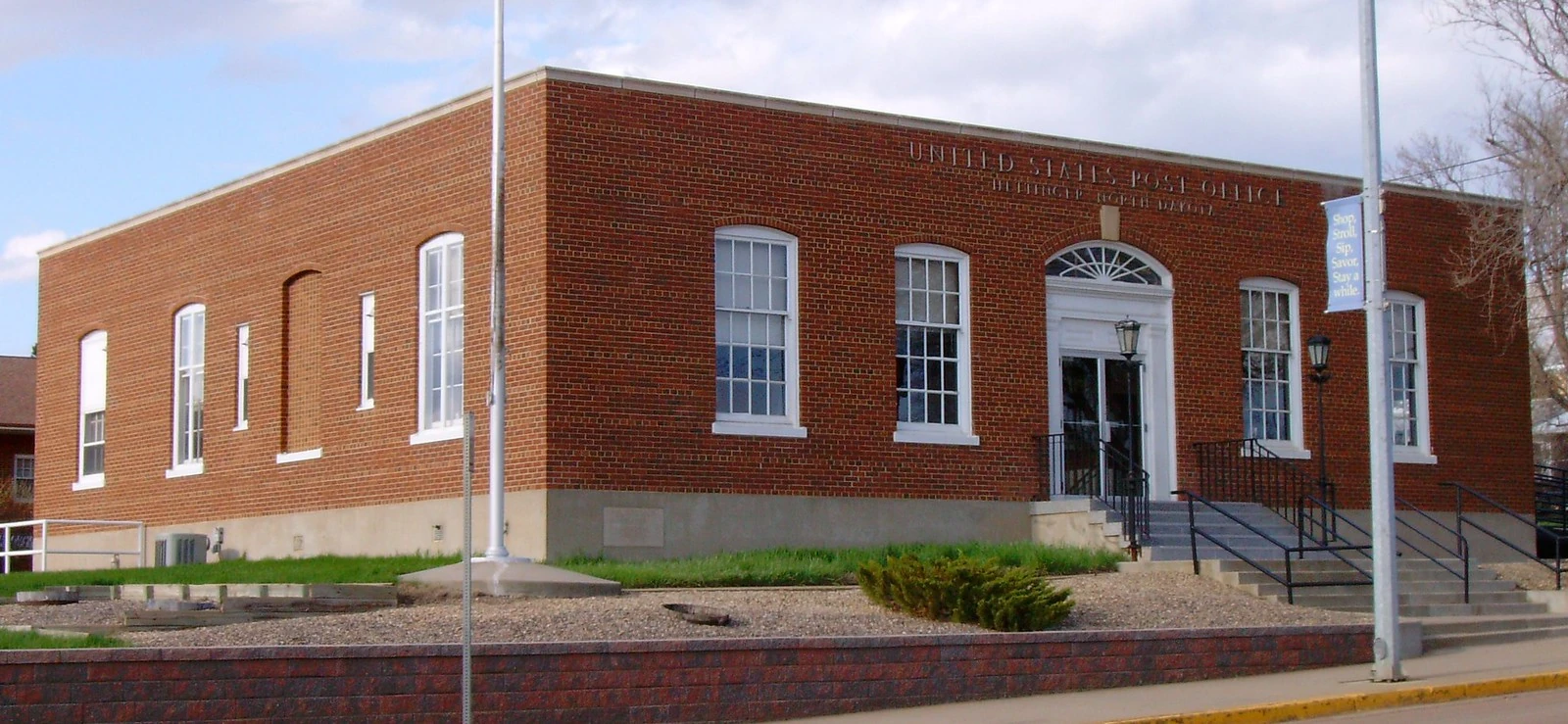
Hettinger Post Office
The Hettinger Post Office was placed in the National Register of Historic Places in 1989. The post office interior is well preserved and very much unchanged. If given the chance, stop and see the historic post office, right off Highway 12 to the north.
